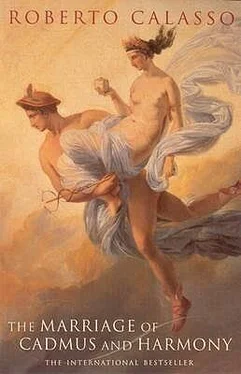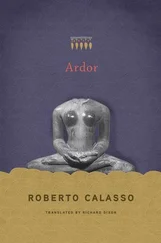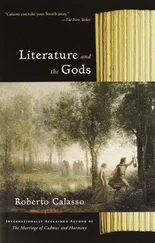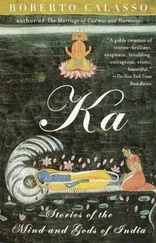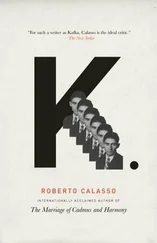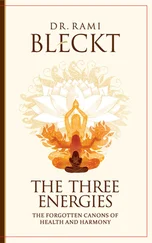Roberto Calasso - The Marriage of Cadmus and Harmony
Здесь есть возможность читать онлайн «Roberto Calasso - The Marriage of Cadmus and Harmony» весь текст электронной книги совершенно бесплатно (целиком полную версию без сокращений). В некоторых случаях можно слушать аудио, скачать через торрент в формате fb2 и присутствует краткое содержание. Год выпуска: 1993, Издательство: Alfred A. Knopf Inc, Жанр: Современная проза, на английском языке. Описание произведения, (предисловие) а так же отзывы посетителей доступны на портале библиотеки ЛибКат.
- Название:The Marriage of Cadmus and Harmony
- Автор:
- Издательство:Alfred A. Knopf Inc
- Жанр:
- Год:1993
- ISBN:нет данных
- Рейтинг книги:3 / 5. Голосов: 1
-
Избранное:Добавить в избранное
- Отзывы:
-
Ваша оценка:
- 60
- 1
- 2
- 3
- 4
- 5
The Marriage of Cadmus and Harmony: краткое содержание, описание и аннотация
Предлагаем к чтению аннотацию, описание, краткое содержание или предисловие (зависит от того, что написал сам автор книги «The Marriage of Cadmus and Harmony»). Если вы не нашли необходимую информацию о книге — напишите в комментариях, мы постараемся отыскать её.
The Marriage of Cadmus and Harmony — читать онлайн бесплатно полную книгу (весь текст) целиком
Ниже представлен текст книги, разбитый по страницам. Система сохранения места последней прочитанной страницы, позволяет с удобством читать онлайн бесплатно книгу «The Marriage of Cadmus and Harmony», без необходимости каждый раз заново искать на чём Вы остановились. Поставьте закладку, и сможете в любой момент перейти на страницу, на которой закончили чтение.
Интервал:
Закладка:
No other god, let alone Athena with her sober olive, or Demeter with her nourishing bread, had ever had anything that could vie with that liquor. It was exactly what had been missing from life, what life had been waiting for: intoxication.

Bursting with youth, his Bacchants buzzing all around him, Dionysus stormed over to Naxos to appear before the abandoned Ariadne. Eros was darting about him like a sweet hornet. The women following the god were holding leafy thyrsi, bloody shreds of young bull’s flesh, baskets of sacred objects. Dionysus had come from Attica, where he had done something no one would ever forget: he had revealed the secret of wine to man. Behind him he was leaving an extraordinary new drink and the body of another abandoned girl. On his departure, Erigone had hung herself from a tree. But there was no royal frame to put her story in, and it was not to be handed down from one rhyme to the next by a chain of poets. Erigone wouldn’t find her poets until much later, two scholars of the latter days of the ancient world, who, oppressed like others by the times in which they lived, felt almost obliged to write about secrets hitherto left untold. They were Eratosthenes and Nonnus, two Egyptians.
The secret of bread had been revealed by Demeter in Attica, and a holy place, Eleusis, had been established to celebrate the event. The secret of wine had been revealed in Attica by Dionysus, to common people, but that day was to be commemorated only by a ceremony with masks, dolls, and swings. There was something very obscure about the whole business, and the ritual commemoration suggested an aura of playfulness at once childish and sinister.
Dionysus had turned up in the role of Unknown Guest in the house of an old Attican gardener, Icarius, who lived with his daughter Erigone and loved to plant new types of trees. His house was a poor one. All the same, he welcomed the Stranger with the same gesture with which Abraham welcomed the angel, by keeping a place in his mind empty and ready for his guest. It was from that gesture that every other gift would derive. Erigone immediately went off to milk their goat for the guest. Sweetly, Dionysus stopped her from making what a philologist would one day describe as “an adorable faux pas.” He was about to reveal to her father, “as a reward for his fair-mindedness and devotion,” something that no one had ever known before: wine. And now Erigone was pouring cup after cup of the new drink for her father. Icarius felt good. Then Dionysus explained that this new drink was perhaps even more powerful than the bread Demeter had revealed to other farmers, because it could both wake a man up and put him to sleep, dissolve the pains that afflicted the heart and make them liquid and fleeting. Now it was Icarius’s job to pass this revelation on to others, as Triptolemus had passed on the revelation of grain.
Was it then that Dionysus seduced Erigone? We don’t know. Like a piece of flotsam from a shipwreck, the only mention that has survived of the affair is a single line in Ovid. Arachne had the effrontery to challenge Athena to a tapestry competition. The cloth she wove showed Europa being carried off by the bull: you could see the girl’s feet drawing back fearfully from the water. It showed Leda beneath the wings of the swan. It showed Danaë under a shower of gold. It showed Asteria in the clutches of an eagle. And it also showed Erigone, who Dionysus tricked with his grapes ( falsa deceperit uva ). Not a word more does Ovid give us. But out of a sense of defiance, Arachne’s cloth included only stories that would bring shame to the gods. Erigone, then, was deceived and seduced by that powerful fruit. Other authors tell us that Dionysus and Erigone had a child: his name was Staphylus, “bunch of grapes,” but this was also the name of the child other writers attribute to Dionysus and Ariadne.
Icarius obeyed Dionysus’s orders. He got onto his cart and set off around Attica to show people this plant with the wondrous juice. One evening he was drinking with a few shepherds. Some of them fell into a deep sleep. It seemed they would never wake up. The shepherds began to suspect Icarius was up to something. Maybe he’d come to poison them and steal their sheep? They felt the impulse to kill. They surrounded Icarius. One picked up a sickle, another a spade, a third an ax, a fourth a big stone. They all hit out at the old man. Then, to finish the job, they ran him through with their cooking spit.
As he lay dying, Icarius remembered something that had happened not long before. Dionysus had taught him how to plant the vines and look after them. Icarius watched over their growth with the same love he had for his trees, waiting for the moment when he would be able to squeeze the grapes with his own hands. One day he caught a goat eating some vine leaves. He was overcome by anger and killed the animal on the spot. Now he realized the goat had been himself.
But something else had happened that had to do with that goat. Icarius had skinned it, put on its pelt, and, with some other peasants, improvised a dance around the beast’s mangled corpse. Icarius didn’t appreciate, as he lay dying, that the gesture had been the origin of tragedy, but he did sense that the death of the goat was connected with what was happening to him, the shepherds circling him, each one hitting him with a different weapon, until he saw the spit that would pierce his heart.
As to the origin of tragedy, all reconstructions ultimately come up against this contradiction. On the one hand there is Eratosthenes’ remark: “It was then that the inhabitants of Icarius danced around a goat for the first time.” Here tragedy seems to involve singing and dancing around the goat. But then Aristotle says that early tragedy was the singing and dancing of the goats. An ancient and pointless dispute was to go on for generations around this contradiction, which isn’t actually a contradiction at all. “If one wishes to dress up as a satyr [a goat], one first has to kill a goat and skin it.” Eratosthenes and Aristotle were saying the same thing, except that Aristotle omits the first and decisive part of the process: the slaying of the goat. Thus it is to Eratosthenes that, along with the first extremely accurate estimate of the circumference of the earth, we owe an extremely concise definition of the process from which tragedy developed. There are three phases: Icarius kills the goat; Icarius skins the goat and stretches part of the pelt into a wineskin; Icarius and his friends dance around the goat and stamp on the wineskin while wearing strips of the pelt. Thus the dance around the goat is also the dance of the goats. It is as if a long, tortuous, and obscure process were suddenly reduced before our very eyes to a few shabby elements which are nevertheless capable of releasing an enormous power.
Of all the women who ascended to the heavens, Erigone was the poorest, the one we know least about. They called her Atletis: the wanderer, the roving spirit, the beggar. And yet this woman’s dog, Maera, was to assume an important position in the night sky, a place central to every calamity, every blessing: he was to become Sirius. One day Erigone was woken up by Maera’s whimpering. Her father had disappeared some months ago. His daughter had searched for him far and wide, wandering about speechless. She felt Maera tugging at her tunic. The dog wanted to take her somewhere. He led her to a well beneath a big tree where they had thrown Icarius’s body. Erigone buried him. Then she climbed high into the tree and hanged herself. Maera stayed there to watch over the two bodies and starved himself to death.
Attica was soon in the thrall of an extraordinary epidemic of suicides: as in Wedekind’s Germany, where the schoolchildren killed themselves with the coming of spring, in Athens young girls began to hang themselves for no apparent reason. Apollo’s oracle proposed a remedy: they must introduce a ceremony in honor of the peasant’s daughter to be found hanging from a branch of the big tree above the well. In the middle of the ceremony was a swing. Then dolls and masks were hung on trees, to sway back and forth in the wind.
Читать дальшеИнтервал:
Закладка:
Похожие книги на «The Marriage of Cadmus and Harmony»
Представляем Вашему вниманию похожие книги на «The Marriage of Cadmus and Harmony» списком для выбора. Мы отобрали схожую по названию и смыслу литературу в надежде предоставить читателям больше вариантов отыскать новые, интересные, ещё непрочитанные произведения.
Обсуждение, отзывы о книге «The Marriage of Cadmus and Harmony» и просто собственные мнения читателей. Оставьте ваши комментарии, напишите, что Вы думаете о произведении, его смысле или главных героях. Укажите что конкретно понравилось, а что нет, и почему Вы так считаете.
